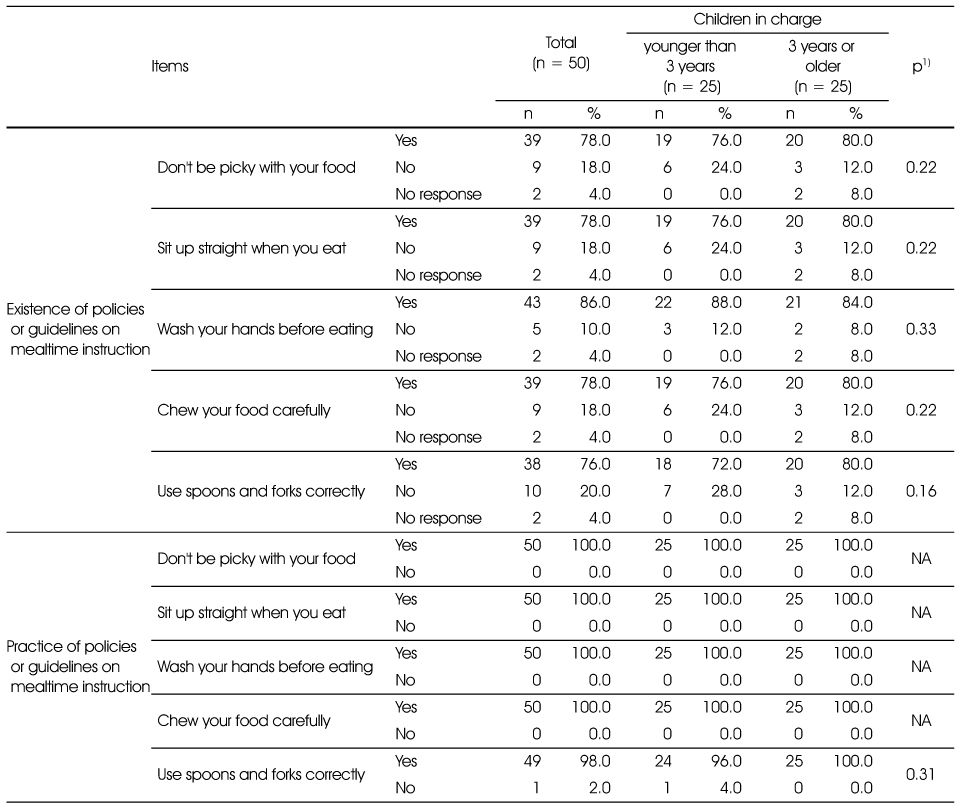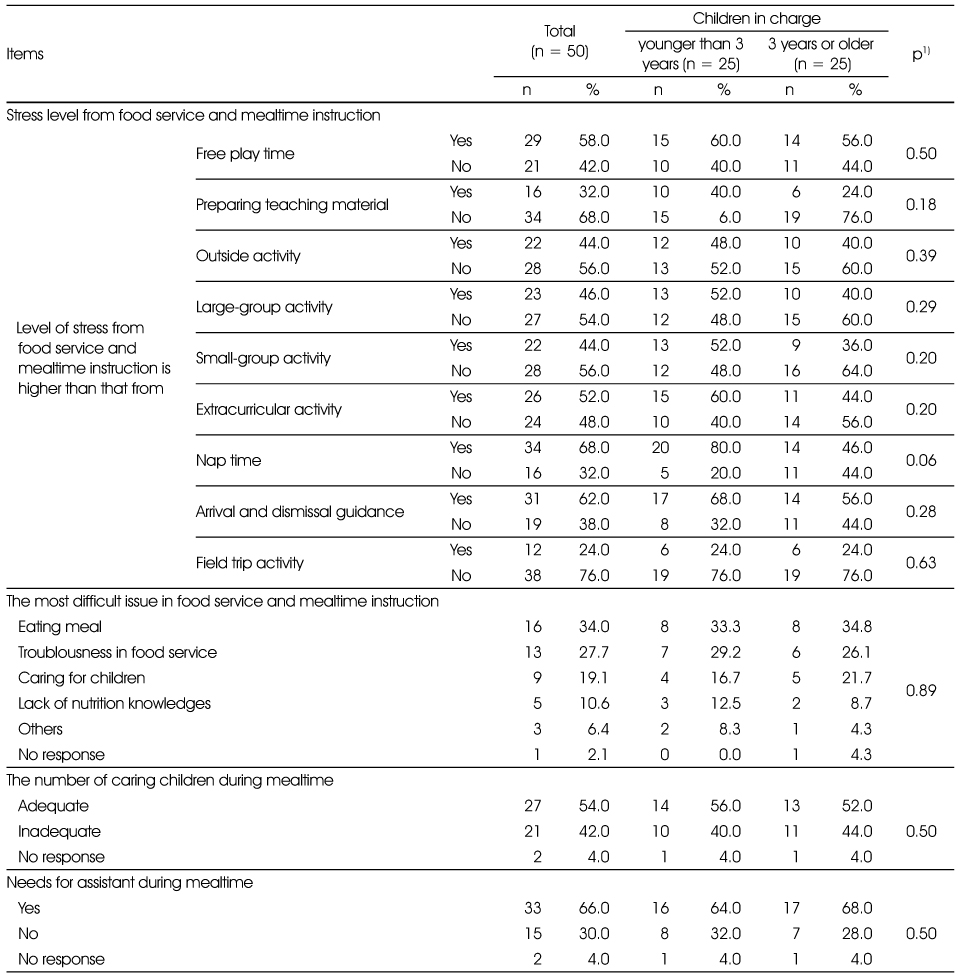Teachers' Participation and Mealtime Instruction in the Food Service at the Kwanak-gu Child-care Centers: Comparison between Child-care Teachers Caring Different Age Groups, Children Younger than Three Years and Those Three Years or Older
Article information
Abstract
This study was conducted to investigate how child-care teachers participate, practice mealtime instruction, and perceive difficulties in food service, focusing on comparison between the teachers caring two different age groups: children younger than three years (Younger Group) and those three years or older (Older Group). Questionnaires were distributed to 151 child-care centers in Kwanak-gu, Seoul, Korea during December, 2011. Only the data from 25 child-care centers, where two respective teachers in charge of Younger Group and Older Group completed the questionnaires, were analyzed. The results showed that there was no difference in terms of child-care teachers' participation in food service practice between the two groups, except for serving method; 'Pre-plated' serving was used significantly more often in Younger Group, whereas 'Line-up' serving was used in Older Group. Approximately, three quarters of the child-care centers had policies or guidelines on mealtime instruction. During mealtime, child-care teachers tended to use frequently verbal instructions such as "sit up straight when you eat" about eating manner, "don't be picky with your food" about eating habit, and "wash your hands before eating" about eating procedure in both the groups. There was no statistically significant difference regarding child-care teachers' perceived difficulties in food service between the two groups. These results indicated that child-care teachers' participation and mealtime instruction in food service did not differ between the two age groups, although children's development of digestion and eating skill differed by age. Therefore, training should be provided to child-care teachers about food service practices and mealtime instruction appropriate to children's age.






